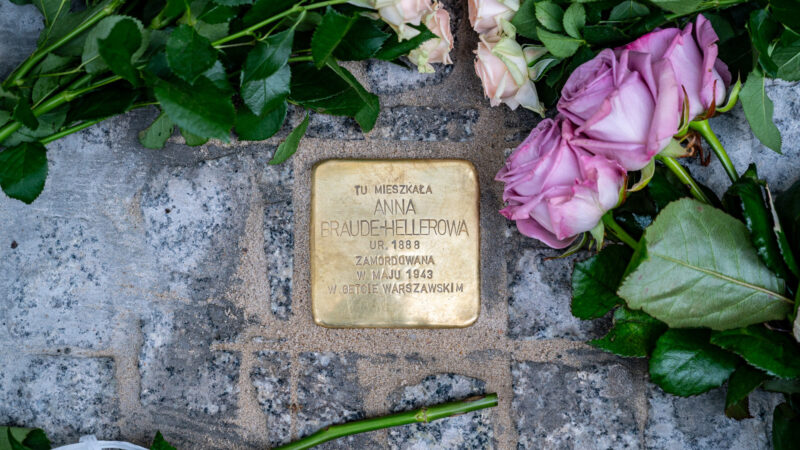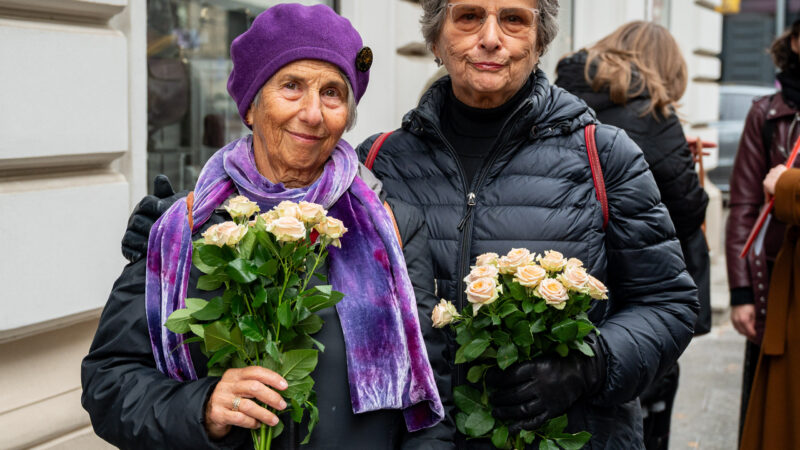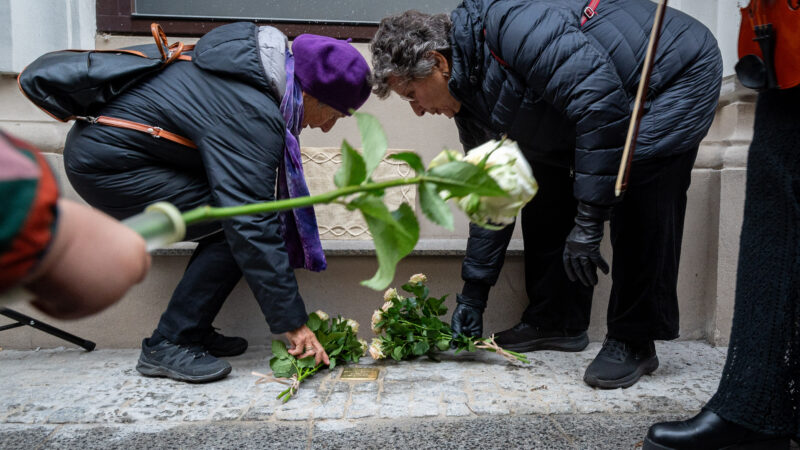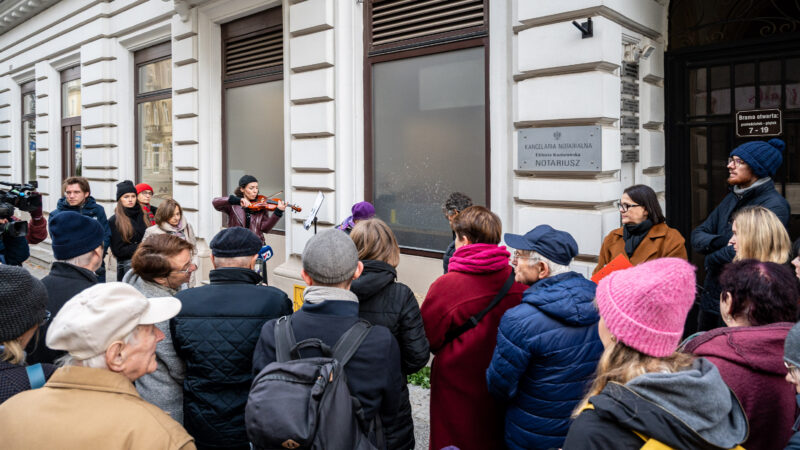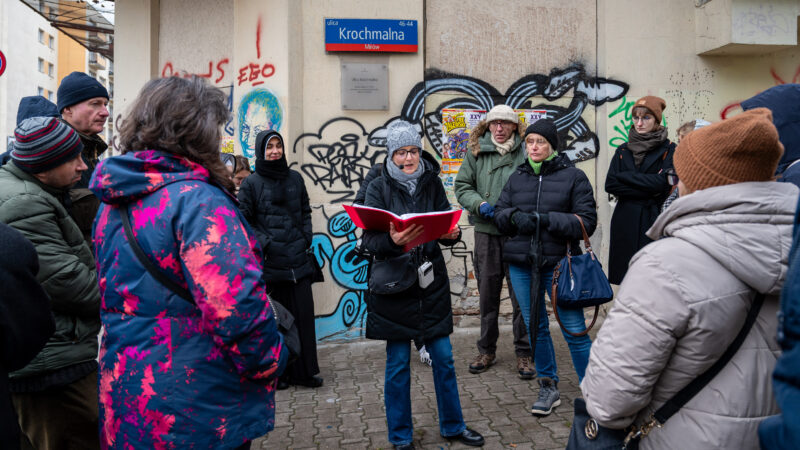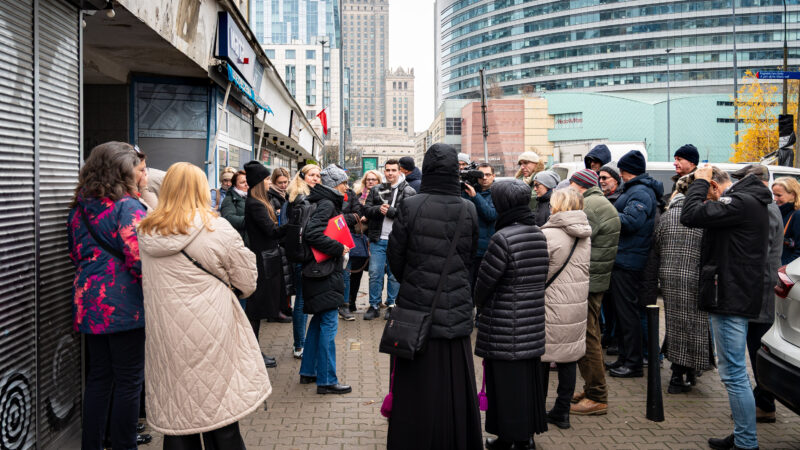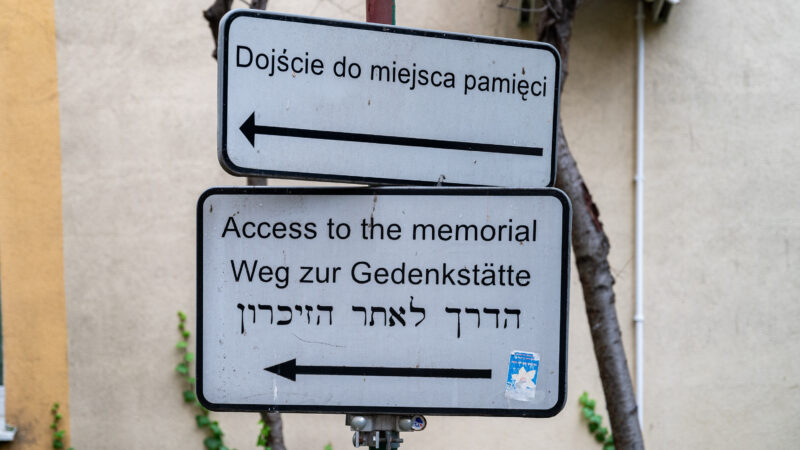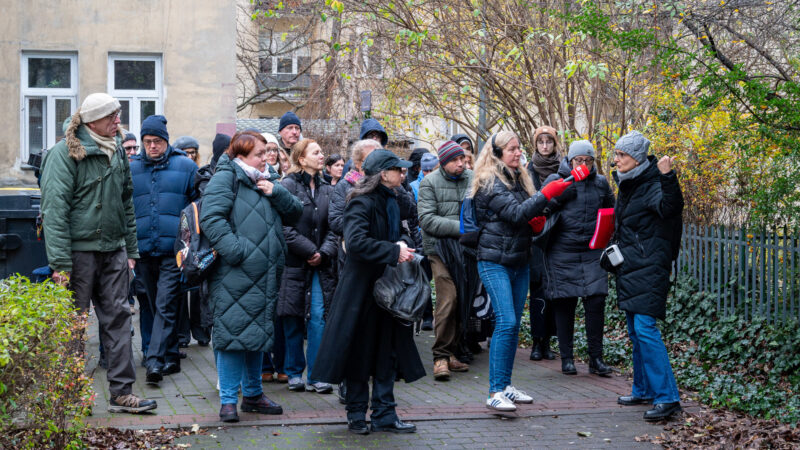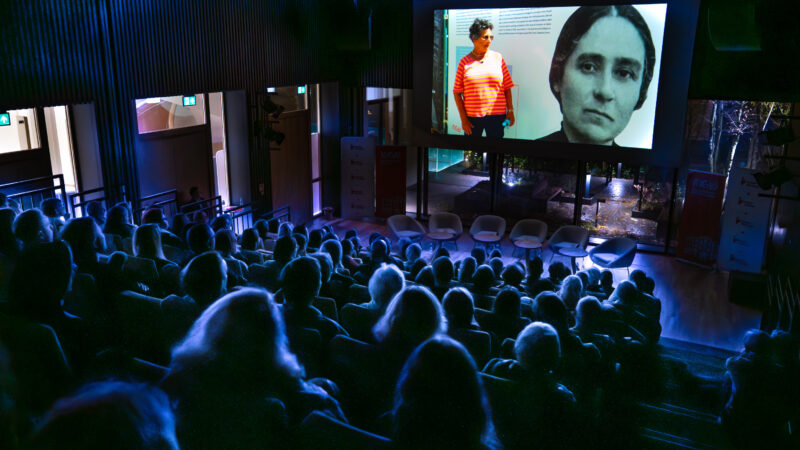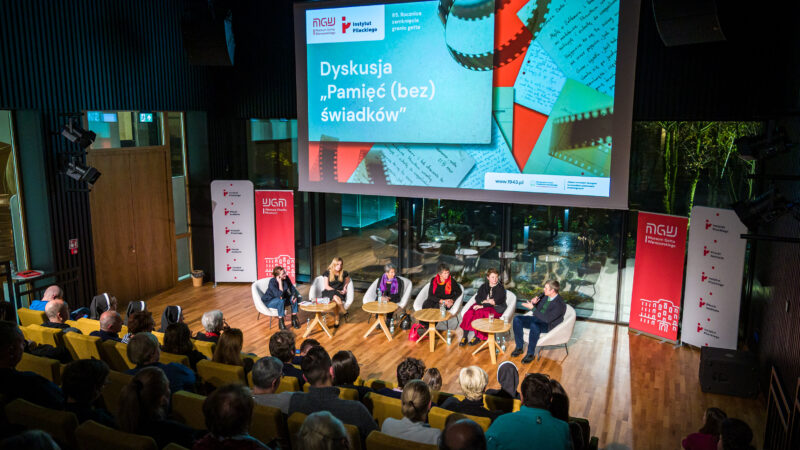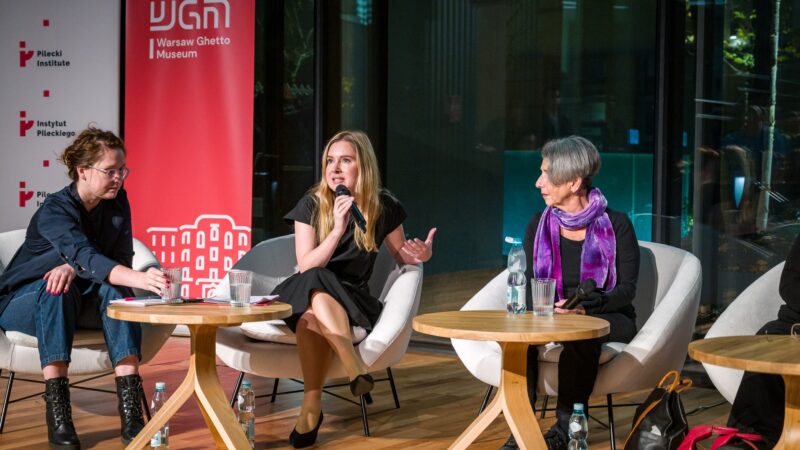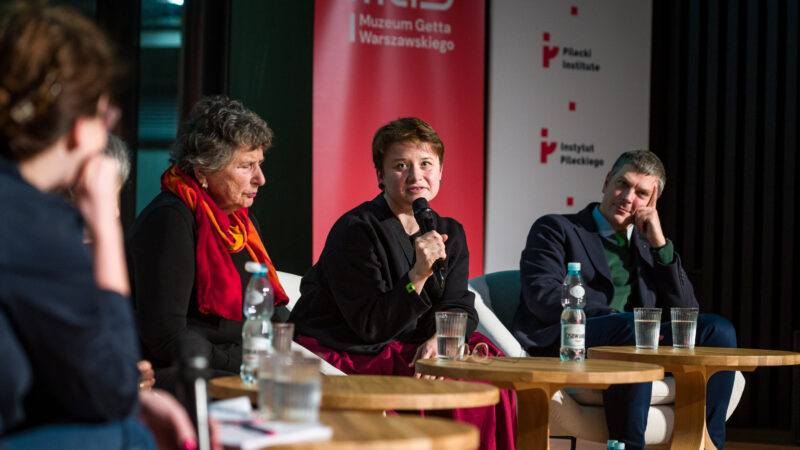Report from the first day of the 85th anniversary of the closure of the Warsaw Ghetto
The 85th anniversary of the closure of the Warsaw Ghetto was commemorated over two days: 16 and 17 November. The programme for the first day focused on the memory of Dr Anna Braude-Hellerowa and the events related to the closure of the Ghetto, while the second day focused on a joint candle-lighting ceremony at the preserved fragment of the former ghetto wall at 53 Sienna Street.
Unveiling of the Stolperstein for Dr Anna Braude-Heller
On 16 November, at 5 Szpitalna Street, in cooperation with the Second Generation Association (Stowarzyszenie Drugie Pokolenie), we unveiled a Stolperstein (Memorial Stone) dedicated to Dr Anna Braude-Heller, chief physician of the Bersohn and Bauman Jewish Children’s Hospital. This was the last address where she lived before she was forced to move to the ghetto.
The stone was unveiled by her granddaughters, Ewa Heller-Ekblad and Anna May Heller. For both of them, it was an important moment to commemorate their grandmother, who remained in the hospital with the children and staff until the very end in May 1943. The event was accompanied by a moving recital by violinist Sara Kandelszajn. The event attracted numerous guests and enjoyed considerable media interest.
A walk through the former Warsaw Ghetto
Parallel to the unveiling ceremony of the Stolperstein, a walk entitled ‘In the footsteps of the Warsaw Ghetto walls’ was led by Katarzyna Jankowiak (WGM). It began at the preserved fragment of the ghetto wall at 62 Złota Street and then led through places where remnants of the former Warsaw Ghetto have survived, including Waliców, Grzybowska, Żelazna and Chłodna Streets. Along with the story of the closure of the ghetto’s borders and the period preceding it, the walk allowed individual stories, including the fate of Dr Braude-Hellerowa, to be placed in a specific topographical context. The tragic ordeal of Warsaw’s Jews began long before the ghetto walls were closed – as early as 21 August 1940, ghetto diarist Chaim Kaplan wrote, ‘The noose around our necks is tightening day by day.’
Premiere of the film ‘Wnuczka Naczelnej’
On the same day, at 5 p.m., the Pilecki Institute hosted the premiere of Masza Makarowa’s film ‘Wnuczka Naczelnej’. The documentary tells the story of Ewa Heller-Ekblad, a psychoanalyst now living in Sweden, who was taken out of the ghetto as a child. In the film, she returns to places associated with the first years of her life and reconstructs her family’s history based on incomplete memories and accounts (‘fragments of memory’), trying to understand the decision of her grandmother, Dr Anna Braude-Heller. The doctor’s decision not to abandon the children entrusted to her care had enormous consequences for the fate of her loved ones, especially her granddaughters, Ewa Heller-Ekblad and Anna May Heller.
The screening was followed by a discussion entitled ‘Memory (without) witnesses’, with the participation of the film’s protagonist and her sister, Masza Makarowa, the director of the WGM, Dr Katarzyna Person, and the director of the Pilecki Institute, Karol Madaj. Of particular value was the exchange of reflections between the sisters, who described from different perspectives the impact of their grandmother’s decision on their family’s life and the emotional burden they had faced over the years. The main conclusion emerging from the statements of all participants in the discussion was the need to re-emphasise the importance of individual stories in the work of preserving the memory of the Holocaust.
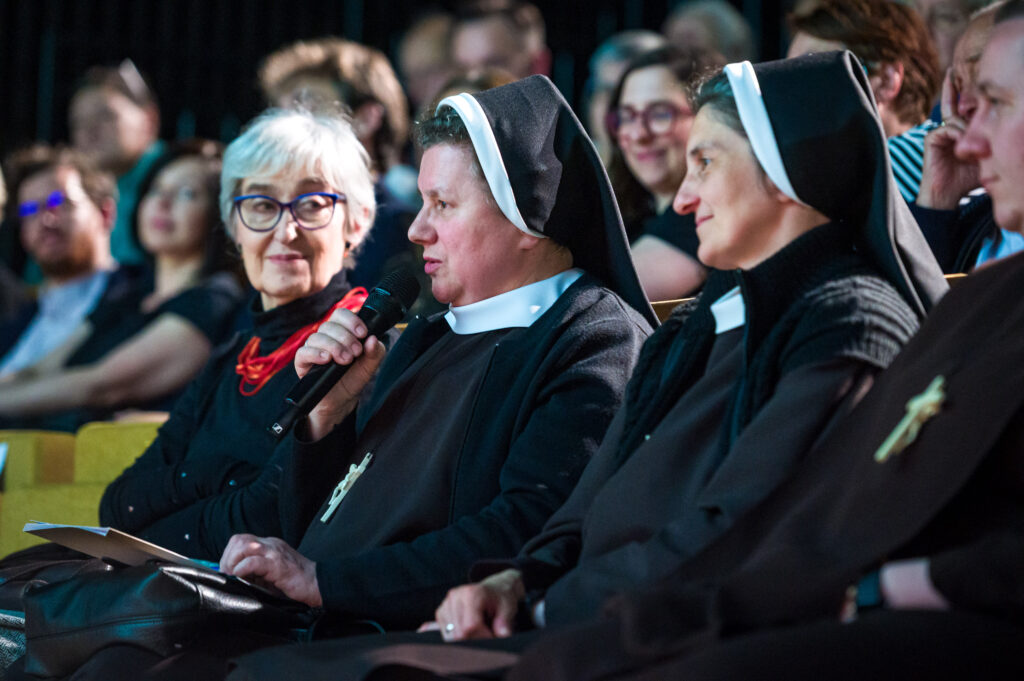
It is worth noting that among the numerous participants of the event were also nuns from the Congregation of the Felician Sisters in Wawer, who took care of three-year-old Ewa Heller during the war after she was taken out of the ghetto.


